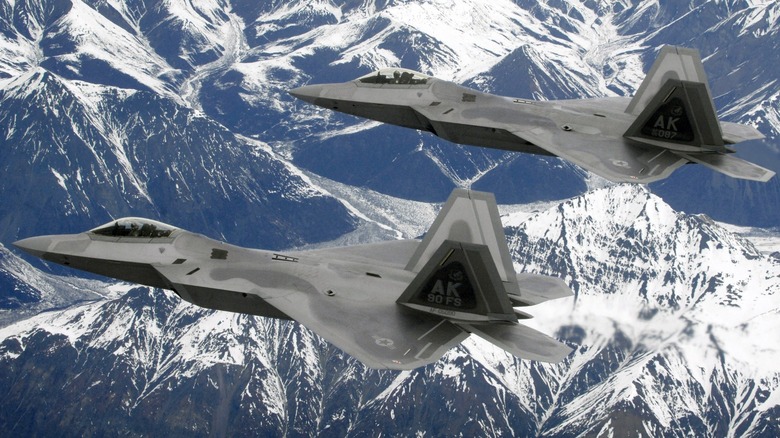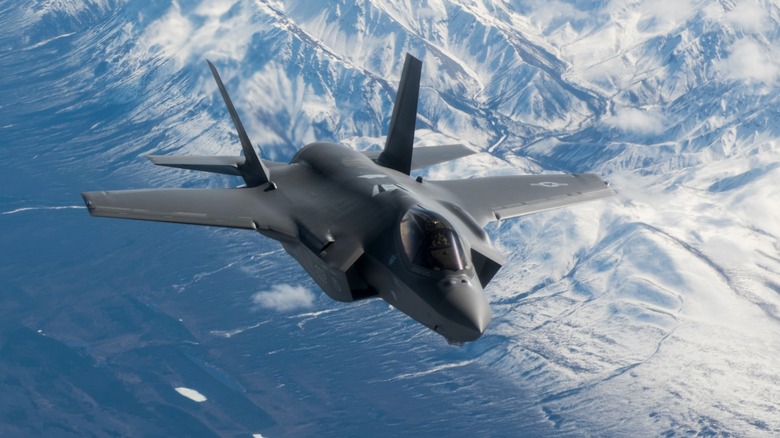Fighter Jet Pilots Do Something Unexpected While Flying Through Alaska In The Winter Months
Modern fighter jets can operate in pretty much any weather condition, be it super hot or incredibly cold. This allows the United States military to conduct operations anywhere in the world, including the frigid cold of Alaska. Imagine that you're flying something like the F-22 Raptor or F-35 Lightning II in a cold environment. When you're flying in Alaskan airspace, you probably want to blast the heat to keep from freezing.
As it happens, that's precisely the wrong thing to do, as pilots don't turn on their heat: they blast the air conditioner at its coldest setting. This seems counterintuitive, but it actually makes a lot of sense when you stop to think about it. When an aircraft flies at 30,000 feet or higher, the air up there is thin and extremely cold. In fact, it's around -48 degrees Fahrenheit, and at 37,000 feet, it drops to -69.7 degrees Fahrenheit. Given the cold temperatures, why then would a pilot freeze themselves when flying in Alaskan airspace?
The answer is a mantra pilots operate under throughout the world: dress to egress. Pilots can regulate the temperature inside their cockpits to remain comfortable. However, when coming in for a landing in a place like Alaska, where it can get bitterly cold, pilots need to consider the temperature they're about to step into. Dressing to egress means preparing for being on the ground or ejecting from the aircraft. If they prepare themselves by literally chilling out before ejecting or exiting the aircraft, it won't shock their system.
Dressing to egress means dressing for success
This mantra is as true in the cold of Alaska as it is in the hot climates of the Middle East. When a pilot needs to leave their aircraft, they need to be wearing the right clothes for the occasion. Consider if a pilot were to eject while flying in Alaska, and they land somewhere remote, where it could take days or more to find them. They need to be able to survive, and if they hopped into their plane while wearing warm-weather gear while blasting the heat, they're going to be in for a world of hurt.
Hence, they dress to egress, and survival becomes a lot easier. Also, it should be noted that the cockpit of a fast-moving aircraft like an F-16 Fighting Falcon can get incredibly hot. The canopy tends to let in plenty of sunlight, baking the pilot inside, while the friction, or aerodynamic drag, resulting from high speeds, increases the external temperatures of the plane. Add to that all of the gear involved in their flight suit, their required oxygen masks, and blasting the AC doesn't sound like too bad of an idea.
Granted, when coming in for a landing, they might become colder than they prefer. Still, given the stress involved and how quickly things can change, they don't have to endure it for too long. Once they step out into the cold Alaskan air, their bodies aren't going from a comfy 72 degrees into an environment that averages around 30 degrees colder. Dressing to egress ensures pilots are prepared for any situation, and blasting the AC in Alaskan airspace is one way of accomplishing this.

